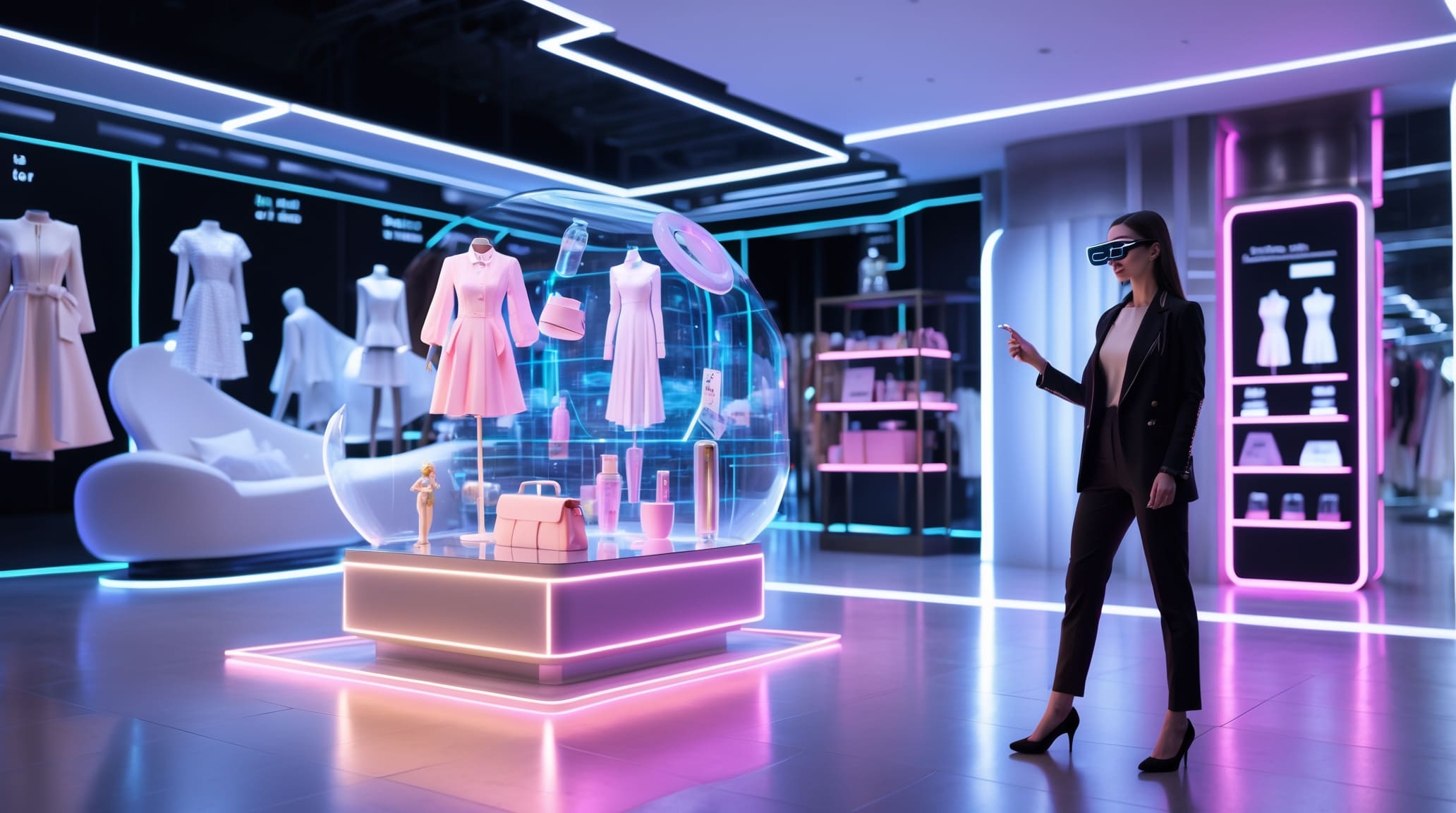The future of advertising isn’t flat, it’s immersive, interactive, and powered by augmented reality in 3D advertising. If your brand is still relying on traditional digital ads, you’re already behind. Consumers expect more than static images; they crave experiences that pull them in, engage their senses, and let them explore products in real ways.
This is where immersive brand experiences come into play, blending digital and physical worlds to revolutionize how customers interact with brands. From virtual shopping to interactive product displays, augmented reality (AR)-powered 3D advertising is no longer a trend—it’s the new standard.
So, are you ready to step into the future?
What is Augmented Reality?
Before diving deeper into AR-powered 3D advertising, let’s break down what augmented reality is.
Augmented reality is a technology that overlays digital content—such as images, sounds, or 3D models—onto the real world. Unlike virtual reality, which immerses users in a completely digital environment, AR enhances the physical environment by blending real-world objects with interactive digital elements.
Some of the most common ways people experience augmented reality include:
✔ AR shopping apps – These apps let users try on clothes, test makeup, or place furniture in their homes before buying. By using a smartphone camera, they create a realistic preview of how products will look in real life. This enhances confidence in purchases and reduces the likelihood of returns.
✔ Social media filters – Platforms like Instagram, Snapchat, and TikTok offer fun AR filters that add digital effects to real-life images. From virtual makeup to animated backgrounds, these filters boost engagement and creativity. Brands also use them for interactive marketing, making ads more entertaining and shareable.
✔ Smart glasses and AR-enabled devices – AR glasses overlay digital content onto the real world, enhancing daily tasks with real-time information. Users can see navigation guides, receive notifications, or even try on virtual accessories. As AR technology advances, these devices will revolutionise how people interact with digital content.
✔ Retail and advertising experiences – AR-powered ads let customers interact with 3D versions of products before purchasing. From scanning QR codes to launching immersive brand experiences, these ads make shopping more engaging. By merging digital and physical elements, AR advertising creates memorable and interactive brand connections.
Augmented reality bridges the gap between digital and physical space, making it a game-changer for brands looking to offer immersive brand experiences.
Why is Augmented Reality Advertising with 3D Models a Game-Changer?
Today’s consumers are bombarded with ads. They scroll past them, ignore pop-ups, and tune out traditional marketing. But AR advertising with 3D models stops them in their tracks. Why? Because it’s not just an ad, it’s an interactive experience.
1. Enhanced Engagement
Unlike traditional ads, AR advertising with 3D models invites customers to interact. Instead of passively looking at an ad, they can explore a three-dimensional version of the product, increasing engagement and brand recall.
2. Higher Conversion Rates
When shoppers can visualize a product in their physical environment, they are more likely to buy. Studies show that AR-powered shopping experiences can increase conversion rates by up to 40%.
3. Reduced Return Rates
One of the biggest challenges in e-commerce is high return rates. Customers often return products because they don’t look or fit as expected. AR advertising with 3D models helps eliminate this uncertainty, reducing return rates and saving brands millions.
4. Memorable Brand Interactions
Traditional ads are easily forgotten, but immersive brand experiences leave a lasting impact. When customers can interact with a product in a virtual space, they’re more likely to remember and trust the brand.
5. Competitive Advantage
Early adopters of AR advertising with 3D models gain a major competitive edge. As more brands integrate AR into their marketing, those who hesitate risk falling behind.
Why Augmented Reality is Important for Brands in 2025?
The digital landscape is changing fast. By 2025, augmented reality will no longer be an option—it will be a necessity. Here’s why:
1. Consumers Expect More Immersive Experiences
Customers no longer settle for static images and boring product descriptions. They want to interact with virtual objects in real-time, whether it’s trying on sunglasses with an AR filter or test-driving a car through an AR-enabled device.
2. The Rise of Virtual Shopping
With e-commerce dominating the retail world, brands must adapt to new ways of engaging customers. Virtual shopping powered by augmented reality lets consumers explore products in three dimensions, making online shopping feel more like a real-life store visit.
3. Increased Mobile and Augmented Reality Adoption
With mobile devices becoming more powerful and AR glasses gaining popularity, accessing AR experiences is easier than ever. Brands that embrace augmented reality now will be ready for the mass adoption of AR-enabled tech in the coming years.
4. Social Media is Driving Augmented Reality Engagement
Social platforms like Instagram, TikTok, and Snapchat have already integrated augmented reality into their ad formats. Brands that use AR advertising with 3D models on these platforms see higher engagement and shareability, increasing brand visibility.
5. AR Enhances the Customer Journey
From discovery to purchase, augmented reality makes the shopping experience smoother. Brands can use AR to guide customers through the hiring process, showcase products in real and virtual worlds, and create interactive tutorials that make shopping effortless.
How Big Brands Are Winning with Augmented Reality Advertising?
Major companies have already embraced immersive brand experiences, setting the bar high. If you’re not following suit, you’re missing out. Let’s look at a few examples:
1. Coca-Cola’s AR Campaigns
Coca-Cola has been experimenting with augmented reality to enhance customer engagement. Whether it’s an interactive holiday campaign or an AR-powered vending machine, the brand keeps innovating. By allowing users to interact with digital versions of their favorite drinks, Coca-Cola keeps its audience engaged and excited.
2. Sephora’s Virtual Try-On
Beauty brands are using AR advertising with 3D models to allow customers to virtually try on products before purchasing. Sephora’s Virtual Artist lets users see how different makeup products will look on their faces in real time, increasing sales and reducing returns.
3. IKEA’s Virtual Shopping Experience
With its virtual shopping app, IKEA lets customers place 3D models of furniture in their homes before buying. This feature removes uncertainty and makes online shopping feel more like a showroom experience.
The Future of Augmented Reality in 3D Advertising
As technology advances, immersive brand experiences will become even more lifelike, transforming the way brands engage with customers. AI-driven augmented reality ads will offer personalized experiences, tailoring content to individual preferences for higher engagement. AR features will be seamlessly integrated into social media and e-commerce platforms, making interactive shopping more accessible than ever. Consumers will also enjoy seamless shopping integration, allowing them to buy products instantly within an AR experience. Brands that invest in augmented reality in 3D advertising today will set themselves apart in the competitive digital landscape. The future is happening now—are you ready to lead the industry?
Ready to Transform Your Advertising?
At 3DAiLY, we specialize in creating high-quality AR advertising with 3D models that bring your brand to life. Whether you need immersive brand experiences or a seamless virtual shopping solution, our cutting-edge approach delivers results—faster and more affordably than ever before. Don’t fall behind. Let’s create an AR experience that makes your brand unforgettable! Contact 3DAiLY today to get started.



